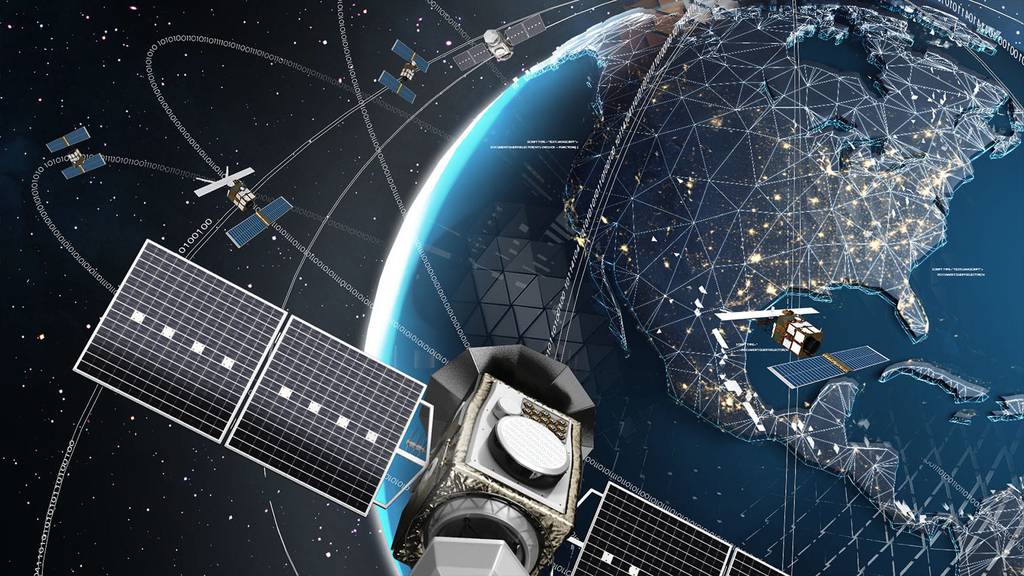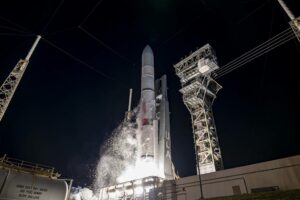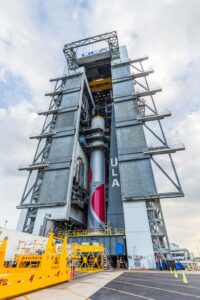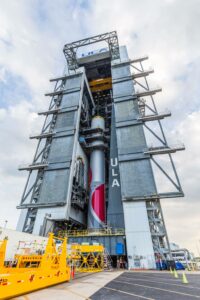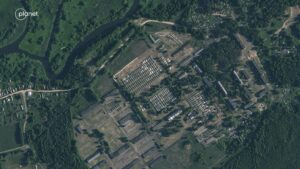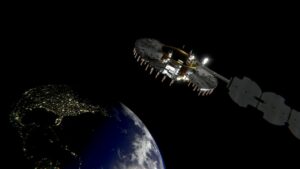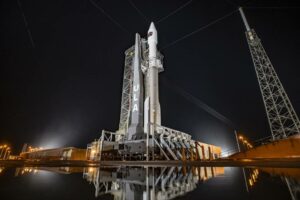WASHINGTON — The U.S. Space Force is ramping up planning for the second phase of its medium-Earth orbit missile tracking program, part of a broader effort to make the service’s space-based missile defense capabilities more resilient against enemy threats.
Space Systems Command, the Space Force’s primary acquisition arm, released a notice March 31 seeking feedback from companies on its strategy to build a fleet of missile tracking satellites in medium Earth orbit, or MEO, which will reside at an altitude between 1,200 and 22,000 miles (1,931 and 35,406 kilometers) above sea level.
The service hasn’t released the details of its strategy for the second phase of its MEO-based missile tracking architecture, dubbed “Epoch 2,” but said in a statement that it will build on the program’s first epoch, which will feature at least nine satellites built by Millennium Space Systems and Raytheon.
The program is one component of the Space Force’s plan to strengthen its missile warning and tracking capabilities against increasing threats from China and Russia by launching satellites to MEO and low-Earth orbit, or up to 1,200 miles above the planet. Today, those spacecraft mostly reside in geosynchronous orbit, or GEO, about 22,000 miles away. Satellites located at MEO, between LEO and GEO, can observe large areas without requiring the same level of complexity from sensors positioned further away from the planet.
The Space Force is seeking $538 million for the MEO tracking satellites in fiscal 2024, largely to support Epoch 1. The service projects it will need $3.5 billion for the program between FY24 and FY28.
Millennium, a Boeing subsidiary, and Raytheon have contracts to build Epoch 1 prototypes that will fly as soon as 2026. They include options for the service to purchase as many as three satellites each, though budget documents indicate it will purchase six from Millennium using a $130 million funding add Congress provided in FY23.
The Space Force may also bring on a third provider and could award a contract by the end of this summer.
By 2028, the Space Force expects to have four MEO satellites on orbit with a goal of launching technology upgrades on a two-year cycle — similar to the Space Development Agency’s approach of regularly fielding new satellites to increase the performance of its fleet.
Courtney Albon is C4ISRNET’s space and emerging technology reporter. She has covered the U.S. military since 2012, with a focus on the Air Force and Space Force. She has reported on some of the Defense Department’s most significant acquisition, budget and policy challenges.
- SEO Powered Content & PR Distribution. Get Amplified Today.
- Platoblockchain. Web3 Metaverse Intelligence. Knowledge Amplified. Access Here.
- Source: https://www.defensenews.com/battlefield-tech/space/2023/04/03/space-force-fleshing-out-second-phase-of-missile-tracking-program/
- :is
- $3
- $UP
- 000
- 1
- 10
- 2012
- 2024
- 70
- a
- About
- above
- acquisition
- against
- AIR
- Air Force
- and
- architecture
- areas
- ARM
- AS
- At
- award
- between
- Billion
- Boeing
- bring
- broader
- budget
- build
- built
- by
- CAN
- capabilities
- challenges
- China
- Companies
- complexity
- component
- Congress
- contract
- contracts
- could
- covered
- cycle
- Defense
- details
- Development
- documents
- dubbed
- each
- earth
- effort
- emerging
- Emerging Technology
- epoch
- expects
- Feature
- feedback
- First
- Fiscal
- FLEET
- Focus
- For
- Force
- from
- funding
- further
- goal
- Have
- HTTPS
- images
- in
- include
- Increase
- increasing
- indicate
- IT
- ITS
- jpg
- large
- largely
- launching
- LEO
- Level
- located
- make
- many
- March
- medium
- Military
- Millennium
- million
- more
- most
- Need
- New
- observe
- of
- on
- Options
- Orbit
- part
- performance
- phase
- planet
- planning
- plato
- Plato Data Intelligence
- PlatoData
- policy
- positioned
- primary
- Program
- projects
- prototypes
- provided
- provider
- purchase
- ramping
- regularly
- released
- Reported
- reporter
- resilient
- Russia
- s
- Said
- same
- satellites
- SEA
- Sea level
- Second
- seeking
- sensors
- service
- significant
- since
- SIX
- some
- Soon
- Space
- Space Force
- space-based
- spacecraft
- Statement
- Strategy
- Strengthen
- subsidiary
- summer
- support
- Systems
- Technology
- that
- The
- Third
- threats
- three
- to
- today
- Tracking
- u.s.
- U.S. Space Force
- upgrades
- warning
- which
- will
- with
- without
- zephyrnet

